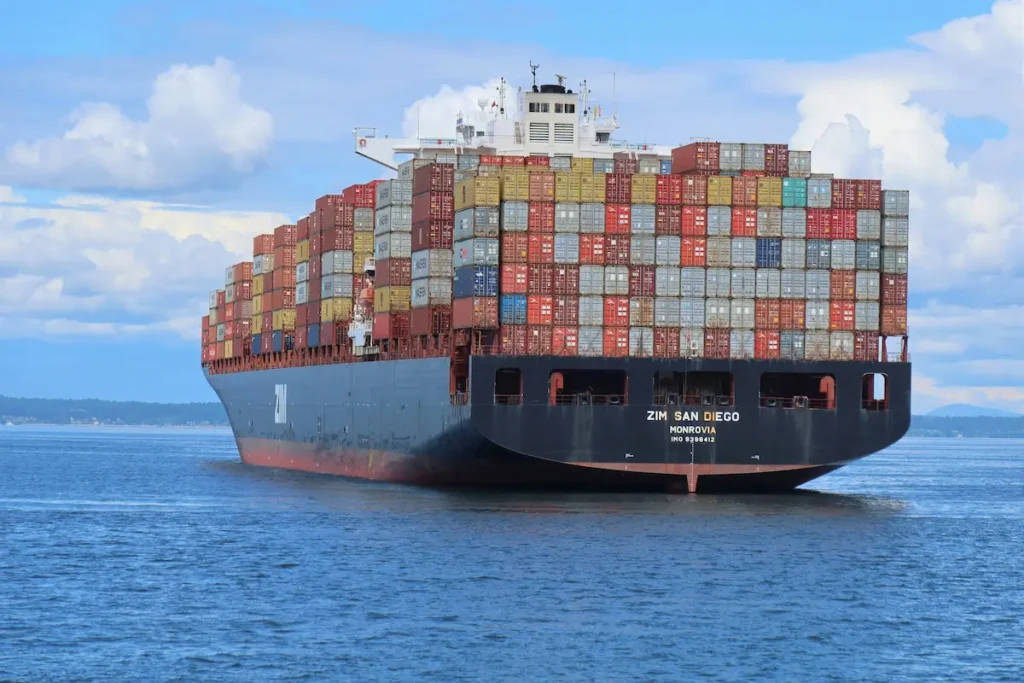Cargo ships are the lifeline of global trade, responsible for transporting over 80% of the world’s goods. These vessels are essential for moving large volumes of goods across oceans, supporting the global economy by connecting producers and consumers in different parts of the world.
Volume of Goods Transported by Sea
Maritime shipping dominates global trade, handling around 11 billion tons of goods annually UNCTAD. This immense volume includes raw materials like oil, coal, and iron ore, as well as finished products like electronics and automobiles. The efficiency of sea transport is unparalleled, with a single container ship capable of carrying over 20,000 TEUs (Twenty-foot Equivalent Units), significantly lowering the cost of transporting goods on a per-unit basis.

For more insight into the capacities of these vessels, you can explore the lifespan of cargo ships, which also touches on their durability and economic viability over time.
Key Global Trade Routes
Several critical trade routes facilitate the global exchange of goods:
- Asia-Europe Route: This route connects major ports like Shanghai, Singapore, and Rotterdam, making it crucial for the exchange of manufactured goods, electronics, and textiles between Asia and Europe UNCTAD.
- Trans-Pacific Route: Linking East Asia with the west coast of the United States, this route is essential for transporting goods such as electronics, machinery, and consumer products Statista.
- Suez and Panama Canals: These strategic chokepoints significantly reduce travel time between key regions. The Suez Canal facilitates trade between Europe and Asia, while the Panama Canal connects the Atlantic and Pacific Oceans, streamlining trade between the East Coast of the United States and Asia.
The Ice Classes of Cargo Ships is another key topic when discussing trade routes through icy waters, such as the Northern Sea Route.
Economic Impact of Maritime Shipping
The economic impact of maritime shipping is profound. The industry generates over $500 billion annually, significantly contributing to global GDP UNCTAD. The efficiency of cargo ships directly affects global trade costs, which in turn influences the prices of goods worldwide. Lower transportation costs translate into cheaper goods for consumers and higher profit margins for companies.
Major global trade hubs, such as Shanghai, Singapore, and Rotterdam, are pivotal in the global supply chain. For instance, the port of Shanghai, the world’s busiest, handled over 43 million TEUs in 2022, underscoring its critical role in global trade Statista.
Similarly, ports in the United States are critical to global logistics, with some of the busiest and largest container ports located there. You can explore more about these major U.S. ports in the Top 10 Busiest and Largest Container Ports in the U.S. article.
For a deeper understanding of how containers are managed during transit, the securing of containers on ships provides valuable insights into the logistics of maritime shipping.
Types of Cargo Commonly Transported
Cargo ships are versatile, designed to transport various types of goods:
- Containerized Cargo: Consumer goods like electronics, clothing, and furniture are packed in containers, enabling efficient loading and unloading UNCTAD.
- Bulk Cargo: Raw materials like coal, grain, and iron ore are transported in bulk, essential for industries worldwide IMO.
- Liquid Bulk Cargo: Crude oil, chemicals, and liquefied natural gas (LNG) are transported in specialized tankers designed to handle large volumes of liquids safely ICS.
- Roll-on/Roll-off Cargo: Vehicles such as cars, trucks, and heavy machinery are transported using specialized ships that allow them to be driven on and off the vessel WTO.
Environmental Considerations
While cargo ships are crucial for global trade, they also have environmental impacts. For instance, cargo ships are significant sources of CO2 emissions, contributing to global climate change. Efforts are ongoing to reduce these emissions through the adoption of cleaner technologies and more efficient operational practices. The push to reduce cruise ship carbon emissions highlights similar efforts in related maritime sectors.
Conclusion
Cargo ships are indispensable to global trade, facilitating the movement of billions of tons of goods annually. Their economic impact is vast, influencing global markets and consumer prices. With key trade routes and major global ports as vital components of this network, cargo ships ensure goods reach their destinations efficiently. As global trade demands grow, the role of cargo ships will remain crucial in sustaining and enhancing international commerce.
- Types of Gas Carriers as per IGC Code – April 22, 2025
- Wind-Assisted Propulsion Systems (WAPS): A Game Changer for Maritime Decarbonization – February 6, 2025
- 10 Boat Salvage Yards in California – January 25, 2025



